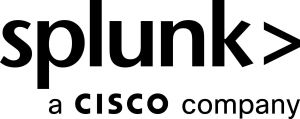Phase 3: Determining your readiness for Splunk Cloud Platform migration
Before you get started with your migration, let's make sure you are prepared for a smooth ride. This phase helps you prepare for your migration and set the right expectation based on learning from thousands of migrations across Splunk’s customers.
Organizational readiness guide
Learn how to manage people and organizational changes in your cloud migration.
|
Area |
Key takeaways |
|---|---|
|
Defining migration value proposition |
Going one level deeper into the cloud vision, define the value of the cloud migration for the different functions in your organization (e.g., Finance, IT, Operations etc.) and the impacted users. This gives a clear picture of how to communicate and enable the benefits of the migration to help drive support and adoption. A good value proposition is concise, measurable, aligns to well-known pain points for a team or stakeholder and has been validated by them. |
|
Cloud migration team staffing plan |
Proactive workforce planning can help you take care of your people while maintaining-- and often improving-- service levels and the kinds of value you can deliver for your business. A good staffing plan ensures you have the support you need to be successful. Use the Meet the Team guide as you create your staffing plan. |
|
Developing and executing communications plan |
A solid communications plan will help:
A good communication plan has:
|
|
Post-migration staffing transition plan |
You can expect a significant reduction in time and effort applied to infrastructure management and maintenance tasks once transitioned to Splunk Cloud Platform. This provides the opportunity to transition team members to other roles and responsibilities that will contribute to improving your business customer’s use, experience and value. Splunk offers a series of activities, including formal training paths, on-demand services, skills workshops, to support your team as they transition duties. What does good look like? There are typically a couple of options for deploying the talents, skills, and energies of your team after you have migrated to Splunk Cloud Platform. Here are the basic “flavors” of what we typically see:
|
Use the Splunk Success Framework best practices to maximize the business value. SSF best practices help you to implement best practices to manage your deployment, as well as helping show your organization the value Splunk provides by showing insights into your data and modular best practices. Apply any best practice, any time - according to your business priorities.

